Overview: Rise of On-Demand Service Apps
In today’s fast-paced digital era, customers increasingly demand services at their fingertips be it a car wash, home repair, tool rental, or even a cleaning service. The traditional method of calling, checking availability, and manually confirming bookings is becoming outdated. As a result, on-demand service booking apps are rapidly gaining popularity, offering a seamless platform that connects service providers with users through real-time slot availability, map-based discovery, and secure digital payments.
According to recent industry insights, the global on-demand service app market is expected to grow at a CAGR of 16.4% between 2023 and 2030. The convenience, flexibility, and efficiency these platforms provide are redefining consumer expectations.
Benefits at a glance:
- Seamless booking & scheduling
- Real-time availability updates
- Contactless payments
- Location-based service discovery
- Increased visibility for small service providers
Target Audience:
- Local service providers (e.g., car washers, electricians, rental agencies)
- End users seeking quick, reliable, and verified local services
- Entrepreneurs planning to launch hyperlocal apps
Market Research & Growth Insights
According to PwC, the global on‑demand economy (encompassing gig work and digital service platforms) is projected to reach USD 335 billion by 2025, driven by continued growth in mobile-first behaviors and digital payments.
Key Market Insights:
- Increasing Smartphone Penetration: Smartphone adoption continues to grow worldwide. As of 2023, approximately 69% of the global population owns a smartphone, with penetration exceeding 80% in regions like North America and Europe.
- Hyperlocal Trend: Consumers want nearby services that are fast, verified, and trackable.
- Revenue Potential: Apps can monetize via multiple channels transaction fees, subscriptions, ads, and featured listings.
- Repeat Usage: Average customers use these apps 3-5 times a month, ensuring high user retention.
- Rising Investment: The on-demand service sector continues to attract significant investor interest. Platforms like Urban Company and similar startups have raised over $15 billion globally in the past 5 years, validating the market’s growth potential and long-term scalability.
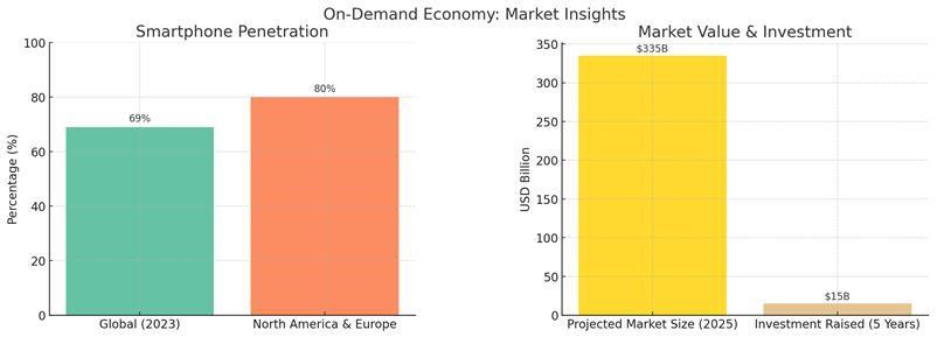
Introduction to the On Demand Service App
Our On-Demand Service Booking System is designed to simplify the interaction between customers and local service providers. Whether it’s booking a car wash, renting equipment, or scheduling a repair, users can find, filter, and book services in a few clicks. It eliminates:
- The need for phone calls
- Manual schedule confirmations
- Payment delays
- No-shows and miscommunication
With features like real-time slot availability, geo-location discovery, secure in-app payments, and dynamic filters, this app becomes a one-stop solution for both ends of the service marketplace.
Core Functionalities of the On Demand Service App
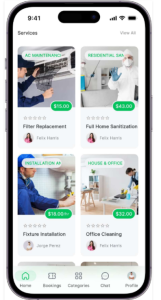
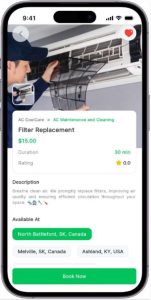
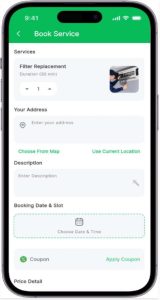
Here’s a breakdown of the primary features that power the system:
1. User App Features: These features are designed for end-users who book services through the app.
- User Registration/Login (via OTP, Google, Apple, etc.): Allows users to sign up or log in using their mobile number (with OTP), Email, Google, or Apple accounts for a smooth onboarding experience.
- Service Discovery via categories, filters, and location: Users can browse services grouped under categories (like plumbing, beauty, car wash), apply filters (ratings, pricing, etc.), and see services available near their location.
- Map View of nearby providers: A visual map displays service providers in real time, enabling users to choose based on proximity and availability.
- Real-Time Booking Slots with availability: Users can view and book from live time slots based on the provider’s calendar, ensuring they get the service when needed.
- Secure Payment Gateway Integration (UPI, cards, wallets): Multiple digital payment methods are integrated into the app to offer seamless and secure transactions for bookings.
- Booking History & Invoices: Users can view past and upcoming bookings, download invoices, and track their spending.
- Push Notifications for reminders, offers, and updates: In-app and push notifications keep users informed about upcoming services, promotional deals, and any changes to bookings.
- Ratings & Reviews for providers: After a service is completed, users can rate the provider and leave feedback, helping improve service quality and inform other users.
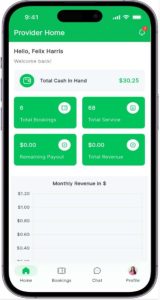
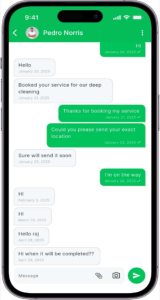
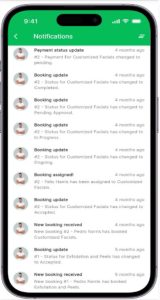
2. Service Provider App Features: This panel is for businesses or individual service providers offering their services via the app.
- Service Listing & Management: Providers can add or edit services they offer, define pricing, and set descriptions and service areas.
- Set Availability Calendar: Providers control their schedule by defining days and times they’re available, preventing overbooking.
- Manage Bookings & Slots: Providers can accept or reject bookings, reschedule appointments, and manage all client interactions in one place.
- Track Payments: A payment dashboard shows earnings, upcoming payouts, deductions, and transaction history.
- Respond to Reviews: Service providers can reply to user reviews to build trust, resolve issues, or thank customers.
- Subscription & Plan Upgrades: Providers can opt for premium features (like top listing, detailed analytics) by upgrading to a paid subscription plan directly from the panel.
3. Admin Panel Features: The admin dashboard is the backend control center for managing the entire ecosystem.
- Dashboard Analytics: Provides insights into bookings, revenue, user activity, and service performance with real-time graphs and metrics.
- User & Provider Management: Admins can view, edit, suspend, or delete user/provider accounts; verify documents; and approve listings.
- Payout Control: Controls when and how payments are released to service providers and can hold or adjust payouts in special cases.
- Dispute Resolution Management: Admins can intervene in case of complaints or issues between users and providers, resolving disputes with evidence.
- Commission Settings: Set and update commission rates charged from service providers per booking or based on subscription tiers.
- Content Management System (CMS): Allows admins to manage homepage banners, static pages (FAQs, T&Cs), notification content, and in-app promotional campaigns.
Top Competitors & Their Market Position

Urban Company (formerly UrbanClap)
- Commands approximately 65% market share in India’s online home services sector; Housejoy holds around 15% and others make up the rest.
- By FY2023–24, reported revenues of ₹827 crore (~USD 100M) with a YoY growth of nearly 30%; losses before tax reduced significantly from the prior year.
- Operates with 40,000+ registered professionals globally, completed over 10 million bookings, and maintains a high repeat usage rate (~77%).
- Revenue model is heavily commission-based (85%), supplemented by lead-generation fees and advertising income

Housejoy
- Holds roughly 15% share of the Indian home services market, making it Urban Company’s main rival.
- Handles around 5,000 daily orders across major cities, with repeat customers constituting 60%+ of its business.
- Uses a hybrid operational model some categories are staffed by internal employees, others via aggregated professionals to enhance control and scalability.

Thumbtack (USA)
- Valued at USD 3.2 billion in 2021 funding round, and counted among the largest U.S. local services platforms.
- Operates over 148 million site visits annually and charges service professionals per lead (~$20–100), with conversion-based offerings contributing to a typical commission of 40–60% per job.
How On Demand Service App Stands Out from These Established Platforms
- Hyperlocal Focus: Rather than covering entire metropolitan areas, your app is optimized for micro-regional coverage delivering faster response times, targeted service quality, and localized user communities.
- Modern UI & UX Design: Unlike legacy platforms, your app offers a sleeker, more responsive interface combining aesthetic appeal with usability aimed at outperforming incumbents in user engagement and satisfaction.
- Integrated Maps & Real-Time Slots: With built-in map-based provider discovery and strict real-time slot locking, your solution reduces booking conflicts and enhances transparency features sometimes lacking or inconsistent in older platforms.
- Full-Service Workflow Automation: Your system handles end-to-end workflows from provider onboarding to booking scheduling, payment reconciliation, notifications, and feedback all within one unified platform; many competitors still rely on fragmented legacy systems.
- Scalable, Reusable Framework: By leveraging 75% reusable core modules (booking, payments, scheduling), your app achieves much faster time-to-market and easier adaptations for vertical expansion or new geographies.
Business Model
You can monetize this app using multiple scalable strategies:
1. Commission-based Model: Charge a fixed or variable percentage per booking from providers.
2. Subscription Model (B2B SaaS): Allow providers to subscribe monthly/quarterly for listing and premium features.
3. Freemium Model: Basic listing free, charge for premium positioning or featured listings.
4. Advertisement Revenue: Run banner or native ads for related services or brands.
5. In-app Purchase: Offer service add-ons, tips, or premium customer services.
Advantages of Using the On Demand Service App
1. Fast Onboarding for Service Providers: Many local service providers are not tech-savvy. The app’s onboarding process is designed to be extremely simple, requiring minimal data input and verification. Providers can create their profiles, list services, set availability, and begin receiving bookings within minutes reducing the friction of going digital.
2. Customer Convenience via Mobile-First: The app is designed with the end-user in mind. It ensures an intuitive interface that works seamlessly on smartphones, allowing users to browse services, view real-time availability, and make bookings in just a few taps. No need for phone calls or manual scheduling.
3. Time-Saving Booking Flow: The integrated booking flow allows users to check availability, select a time slot, make payment, and receive confirmation without needing human intervention. Providers also save time by managing bookings in one dashboard, reducing miscommunication and double bookings.
4. Centralized Payment System: All transactions are routed through the app, ensuring transparency, trust, and record-keeping. It eliminates cash handling, facilitates instant payment confirmation, and enables automated invoicing simplifying accounting for both users and providers.
5. No Operational Overhead: The app automates core operations like appointment booking, rescheduling, reminders, payments, and feedback collection. Service providers no longer need dedicated staff or separate tools for managing bookings, saving both money and effort.
6. Transparent Feedback Mechanism: Both customers and service providers can rate and review each other. This not only builds trust but also motivates providers to maintain service quality. A transparent system helps users choose providers based on real performance, not just availability.
7. Increased Bookings & Revenue for Local Vendors: By bringing their services online, providers gain visibility to a wider customer base. Features like map discovery, real-time slot availability, and promotional listings significantly increase the chances of getting booked ultimately boosting revenue.
Technical Stack
Each component in the tech stack plays a specific role in building a robust, scalable, and user-friendly app:
| Component | Explanation |
|---|---|
| React Native | Used for mobile app development. It allows a single codebase for both iOS and Android, reducing development time and cost. Fast, responsive, and supported by a large developer community. |
| React.js | For the web front-end (admin panel, dashboards). Ensures fast rendering, reusable components, and a responsive UI experience. |
| Tailwind CSS | A utility-first CSS framework that helps in building modern, mobile-friendly interfaces quickly with consistent design. |
| Node.js / Django | Back-end frameworks. Node.js (JavaScript) is great for handling high concurrency and real-time updates. Django (Python) offers strong security and scalability great for enterprise-grade apps. |
| PostgreSQL / MongoDB | PostgreSQL is a powerful relational database system. MongoDB, being NoSQL, is suitable for flexible data models like dynamic service listings and slot schedules. |
| Socket.IO / Firebase Realtime DB | Enables real-time booking updates, slot locking, chat features, and live service availability. |
| Razorpay / Stripe / PayPal | Payment gateways that enable secure, fast, and multi-currency transactions. Offer support for UPI, cards, and wallets. |
| Google Maps API | Provides map-based location discovery of services and route guidance. Essential for hyperlocal services. |
| Firebase Auth / Twilio | Used for user authentication and OTP verification. Ensures secure and verified logins. |
| FCM (Firebase Cloud Messaging) | For sending real-time push notifications about bookings, status updates, promotions, and reminders. |
| AWS / Google Cloud | Cloud hosting for scalability, security, and global access. Ensures high uptime and data redundancy. |
This stack is chosen for cost efficiency, scalability, cross-platform compatibility, and speed of development.
Overcoming Key Challenges
1. Real-time Booking Conflicts
Problem: If two users try to book the same slot at the same time, it can result in double bookings or failed appointments.
Solution: Implement real-time slot-locking mechanisms. Once a user selects a time slot, it’s temporarily held in their session until payment is made or a timeout occurs. This prevents the same slot from being selected by others during the booking flow.
2. Service Quality Assurance
Problem: Customers often hesitate to book lesser-known service providers due to uncertainty about quality or trust.
Solution: Introduce a verified provider badge, enforce minimum quality standards, and allow users to rate and review every service. Frequent low-rated providers can be flagged for re-verification or suspended. Also, the admin panel can monitor patterns in complaints or disputes.
3. Low Service Provider Adoption
Problem: Small businesses and local service providers may lack the technical know-how or interest in managing a digital platform.
Solution: Create a simple, intuitive onboarding experience with minimal documentation. Offer freemium or trial plans to help providers experience benefits before committing. Educate through in-app tooltips, email tutorials, and onboarding videos.
4. Payment Disputes
Problem: Users may claim incomplete service; providers may argue over non-payment or cancellation refunds.
Solution: Use escrow-based payment release (funds are held until service completion confirmation). Enable in-app dispute resolution where the admin can mediate and approve refund requests after evaluating logs and reviews.
5. Scalability Bottlenecks
Problem: As the user and provider base grows, traditional systems can slow down or crash, leading to a poor user experience.
Solution: Build using microservices architecture, enabling individual components (booking, payments, notifications) to scale independently. Use cloud-based auto-scaling to manage high demand without manual intervention.
Industries We Serve
Our on-demand service booking system caters to a diverse range of industries where service discovery, scheduling, and seamless payment integration are critical for customer satisfaction. Here are the top industries that benefit most from our platform:
1. Home Services: From cleaning and plumbing to electrical repairs and appliance servicing, the home services sector relies heavily on reliable and fast local service bookings. Our app enables real-time scheduling, verified professional profiles, and seamless payment.
2. Automotive Services: Car wash, detailing, repairs, and tire services are increasingly being booked online. The app allows customers to locate nearby service providers, compare rates, check availability, and pay digitally enhancing both transparency and convenience.
3. Equipment Rentals: Whether it’s construction tools, party supplies, or event equipment, rental businesses benefit from calendar-based availability, geo-location features, and secure transactions. Users can filter by need, time, and proximity.
4. Beauty and Wellness: Salons, spas, massage therapists, and personal grooming services can manage appointments, showcase reviews, and receive prepayments directly through the app. Real-time slots ensure efficient customer flow.
5. Professional Services: This includes tutors, freelance consultants, notaries, and IT professionals. They can list services, manage slots, enable secure payments, and offer online or on-site services, all through a unified interface. Our platform is flexible and modular, allowing rapid customization for various industries with shared needs around availability, location, ratings, and payments
On Demand Service App Development Process
A successful on-demand app requires both strategy and execution. Here’s how we do it:
1. Requirement Gathering: We collaborate with stakeholders to understand the business model, service categories, geographic scope, target users, and monetization strategies. This stage ensures alignment between client vision and product strategy.
2. Market & Competitor Research: We analyze leading apps in your domain (e.g., Urban Company, TaskRabbit), identify their strengths and gaps, and formulate your app’s unique selling propositions (USPs). This ensures competitive edge and relevance.
3. Wireframes & UX Prototyping: Our design team builds low-fidelity wireframes to define the structure of each screen. Once approved, high-fidelity interactive prototypes are created to visualize the app before development begins.
4. UI Design: We translate the wireframes into beautiful, brand-aligned, and intuitive user interfaces. Every screen is optimized for usability, responsiveness, and conversion using modern design principles.
5. Development: We use Agile methodology breaking down the project into sprints. Our team works on front-end (React Native), back-end (Node.js or Django), and admin panel (React.js) in parallel. Each sprint delivers working features.
6. QA Testing: Every feature is tested for functional correctness, performance, security, and device compatibility. We do:
- Unit testing
- Manual UI testing
- Automated testing (for critical workflows)
- Cross-device/browser testing
7. Launch & Deployment: Once approved, we
- Set up cloud hosting (AWS, GCP)
- Configure CI/CD pipelines
- Publish to Google Play & Apple App Store
- Monitor crash logs and analytics
8. Post-launch Support: After going live, we offer:
- Bug fixing
- Feature enhancements
- Server maintenance
- Performance monitoring
Cost Estimation for Developing an On-Demand Service App
Building an on-demand service app involves various components that collectively impact the overall development cost. Below is a breakdown of key areas:
1. App Development Team: The development team is the foundation of the entire process. Their expertise determines both the quality and speed of the app’s delivery. Costs can vary depending on the team’s location, experience level, and the number of professionals involved.
2. App Design: Design plays a critical role in creating a smooth and engaging user experience. A clean and intuitive interface can improve user satisfaction and reduce the risk of users abandoning the app. More detailed or customized designs can increase overall costs depending on the complexity involved.
3. App Features: The features you include in your app significantly impact development costs. Basic features like login, booking, and payments cost less, while advanced functionality such as live tracking, real-time availability, or AI-based recommendations will require more time and resources, thus increasing the budget.
4. App Testing: Before launch, rigorous testing is needed to ensure the app runs smoothly across different devices and platforms. This phase helps identify and fix bugs, ensure security, and confirm that all features work as expected. More devices, platforms, or custom testing requirements can raise the cost.
5. App Maintenance: After the app goes live, continuous updates and support are essential to keep it running effectively. This includes fixing any emerging bugs, keeping the app compatible with OS updates, and adding new features based on user feedback. Maintenance is usually charged annually or monthly.
Estimated Cost Breakdown
| Development Stage | Estimated Cost |
|---|---|
| App Conceptualization | $0 – $5000 |
| UI/UX Design | $5000 – $10,000 |
| Front-End Development | $5000 – $15,000 |
| Back-End Development | $10,000 – $25,000 |
| Integration with Payment Gateway | $0 – $5000 |
| Testing and Quality Assurance | $5000 – $10,000 |
| Deployment and Launch | $0 – $5000 |
| Post-Launch Maintenance and Support | $2000 – $10,000 |
Why Choose Us for Your On-Demand Service App Needs
Choosing the right development partner is critical for the success of your on-demand platform. Here’s why our team is uniquely positioned to deliver a high-performance, scalable, and user-friendly app tailored to your goals:
1. Proven Expertise in On-Demand Platforms: We’ve developed multiple successful on-demand apps across industries like car washes, rentals, and local services. We understand user expectations, common pitfalls, and how to build solutions that drive bookings and engagement.
2. Accelerated Development with Reusable Components: With 75% of the core modules like booking workflows, payment integration, and slot scheduling already built and tested, we can significantly reduce development time and cost without compromising quality.
3. Scalable, Custom-Built Architecture: Our modular system architecture is built for growth. Whether you’re serving 100 or 1 million users, your app will be ready to scale plus, it’s fully customizable to support new features and business models in the future.
4. Strategy-First Approach: We go beyond development we help refine your product strategy, revenue model, and feature roadmap. Our team brings a business mindset to every technical decision to ensure your app succeeds in a competitive market.
5. Cross-Platform Mobile Apps: Using React Native, we build high-quality apps for both Android and iOS from a single codebase saving time, reducing bugs, and ensuring consistent performance across devices.
6. Ongoing Support & Post-Launch Services: From deployment to updates and user analytics, we offer comprehensive post-launch support to keep your platform optimized, secure, and ready to grow.
Key Takeaways: On-Demand Service App Development
- Rapid Market Growth: The on-demand service industry is expanding at a CAGR of over 16%, driven by consumer preference for convenience, digital payments, and instant access to local services.
- Solves Real Problems: The app bridges the gap between customers and service providers by simplifying scheduling, real-time availability, secure payments, and transparent communication.
- High Reusability = Faster Time-to-Market: With 75% of core modules reusable like booking flows, payment systems, and map integration development time and costs are significantly reduced.
- Multiple Revenue Streams: The platform can generate income through commissions, provider subscriptions, featured listings, service fees, and even white-label licensing.
- Built for Scalability & Flexibility: Modular architecture and cloud deployment ensure that the app can grow with your business and adapt to new use cases or user demands.
- Perfect for a Wide Audience: Ideal for car washes, home services, equipment rentals, beauty professionals, and any local service providers looking to digitize their operations.
- Your Digital Partner Matters: Choosing an experienced development partner with proven domain knowledge ensures your app is not only functional but competitive and future-proof.
Frequently Asked Questions (FAQs)
It’s a digital platform that connects users with local service providers (e.g., car washes, rentals, cleaning services), allowing them to browse offerings, check availability, book services, and make payments all in real time.
Both end-users (individuals seeking services) and service providers (local businesses wanting to digitize their booking process) can use the app. It’s designed to benefit industries like auto care, rentals, home maintenance, personal grooming, and more.
They can register through the provider panel, create a service profile, list offerings, set pricing, define availability slots, and start receiving bookings. They also get access to dashboards to manage appointments, payments, and reviews.
We integrate trusted payment gateways (Razorpay, Stripe, etc.) and use encryption, token-based authentication, and GDPR-compliant data policies to ensure secure transactions and user data protection.
Yes. The platform is modular and easily customizable. Whether you want it branded for your business, restricted to a specific city, or tailored to a niche category (like salon-only or pet services), we can build accordingly.
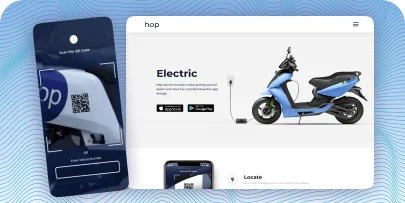
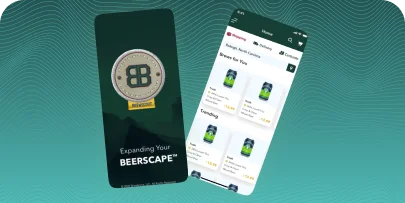
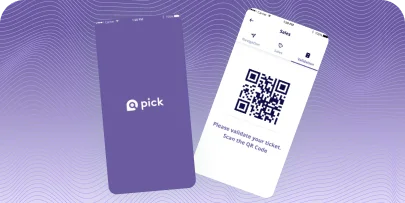
No Comments
Sorry, the comment form is closed at this time.